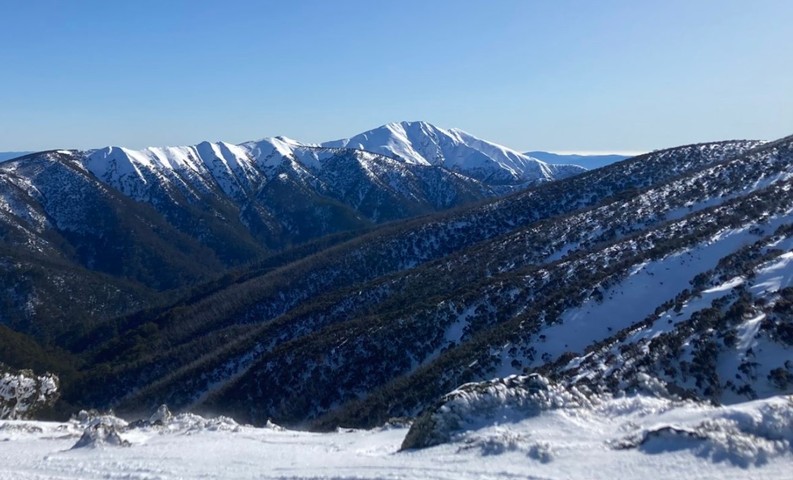Learn When and Where You Can Witness Snow In Australia for a Scenic Escape
Learn When and Where You Can Witness Snow In Australia for a Scenic Escape
Blog Article
Understanding the Relevance of Snow in Australia for Agriculture and Tourism
While Australia is commonly linked with sun-kissed beaches and dry wilderness, it likewise flaunts a riches of snowy alpine areas. As we examine this shocking crossway, the potential influence of changing environment patterns on Australia's snowfall and its subsequent effects come to be a compelling emphasis.

The Unforeseen Snowfall: Australia's Alpine Regions
When winter cloaks the globe, Australia's Alpine areas wear a white mantle of snow, a phenomenon that appears nearly paradoxical in this dominantly sun-baked land. In contrast to the stereotyped picture of Australia as a land of deserts and beaches, these regions supply a stunning and unexpected contrast. The Australian Alps, stretching across New South Wales, Victoria, and the Australian Capital Region, obtain more snowfall than Switzerland. This unforeseen winter heaven uses a special community, providing a habitat for several indigenous types and a snowy playground for wintertime sporting activities fanatics. The annual snowfall, although not as plentiful as in some countries, is a crucial element of Australia's climate diversity and plays a considerable role in the nation's agricultural techniques and tourist market.
Wintertime's Bounty: Snow's Payment to Australia's Water Resources
In spite of its rarity in the broader landscape of Australia, snow in the Alpine regions plays an important duty in the nation's water resources. This is particularly critical for Australia, a continent regularly plagued by dry spells. Without the bounty of winter season snow, Australia's water resources would be substantially stressed, influencing both the population and the atmosphere.
White Blanket, Green Area: The Effect of Snow on Australian Farming
Although much less visible, the impact of snow on Australian agriculture is significant. Snowfall in the high nation functions as an all-natural form of irrigation, slowly melting and offering a stable supply of water to lower-lying farmland. This water-rich environment cultivates the growth of robust plants, adding to the country's agricultural efficiency. Additionally, snowfall improves soil health by presenting moisture and capturing nutrients, which are slowly released as the snow melts. This process enriches the dirt, promoting the development of healthier, extra durable crops. In addition, snow cover acts as a protective covering, protecting the ground against extreme winter season temperature levels that could or else damage plants. Therefore, the function of snow in Australian agriculture is both crucial and diverse.

Money: Snow Tourism and Its Economic Importance in Australia
While the worth of snow to Australian farming is commonly undervalued, its contribution to the nation's tourist sector is unquestionably significant. The snow-laden optimals of Australia's towering regions attract a flurry of travelers every winter season, adding millions to the nationwide economic climate. These visitors participate in a selection of snow-based tasks, from snowboarding Read Full Article and snowboarding to snowshoeing and sledging. The thriving snow tourist market has caused the development of numerous work, from ski trainers to resort personnel, strengthening local economic situations at the same time. Furthermore, the earnings produced from snow tourism helps fund numerous infrastructure tasks and necessary services in these regions - Snow In Australia. Therefore, the financial value of snow tourist in Australia extends far past the slopes.
Future Projection: Climate Change and Its Prospective Impacts on Australia's Snowfall
As the review world comes to grips with the fact of environment change, so as well should Australia contemplate its potential impacts on the nation's snowfall. Existing clinical models predict a decrease in Australian snowfall, with potentially serious effect on both farming and tourist. visit this web-site In some areas, the snow period might be reduced by as much as 80 days by 2050. Such adjustments intimidate the feasibility of Australia's ski industry, which contributes considerably to the regional economic climate. Less snowfall could also influence the nation's farming field, as snowmelt plays a crucial role in sprinkling plants. The prospective impacts of these changes underscore the necessity of environment modification mitigation initiatives, both in Australia and globally.
Conclusion
Finally, snow is a critical aspect of Australia's agricultural and tourism fields. It not just nurtures the country's farming landscape however also gas its winter months tourist market. Nonetheless, the impending hazard of environment change raises problems concerning the future of Australia's snowfall patterns, possibly disrupting these substantial private sectors. Understanding and attending to these obstacles is critical for the sustainability of Australia's economic climate and community.

When wintertime capes the globe, Australia's Alpine regions wear a white mantle of snow, a spectacle that seems virtually paradoxical in this dominantly sun-baked land.Regardless of its rarity in the wider landscape of Australia, snow in the Towering areas plays an important duty in the country's water resources. Without the bounty of winter months snow, Australia's water resources would certainly be significantly strained, affecting both the setting and the populace.
Hence, the financial significance of snow tourism in Australia prolongs much past the slopes.
In final thought, snow is a crucial element of Australia's agricultural and tourism industries. Snow In Australia.
Report this page